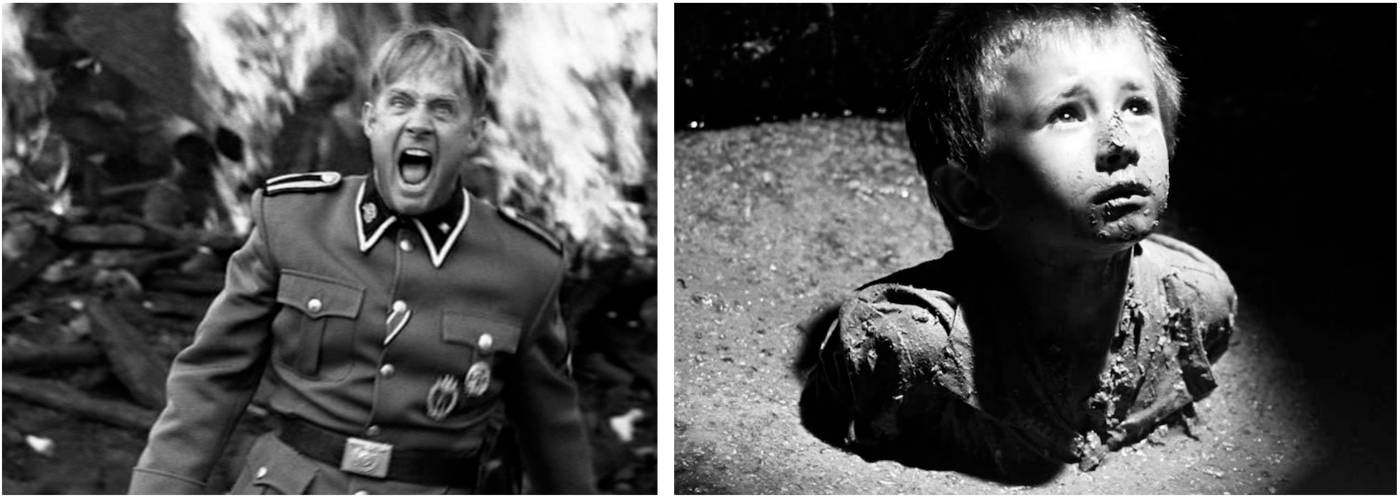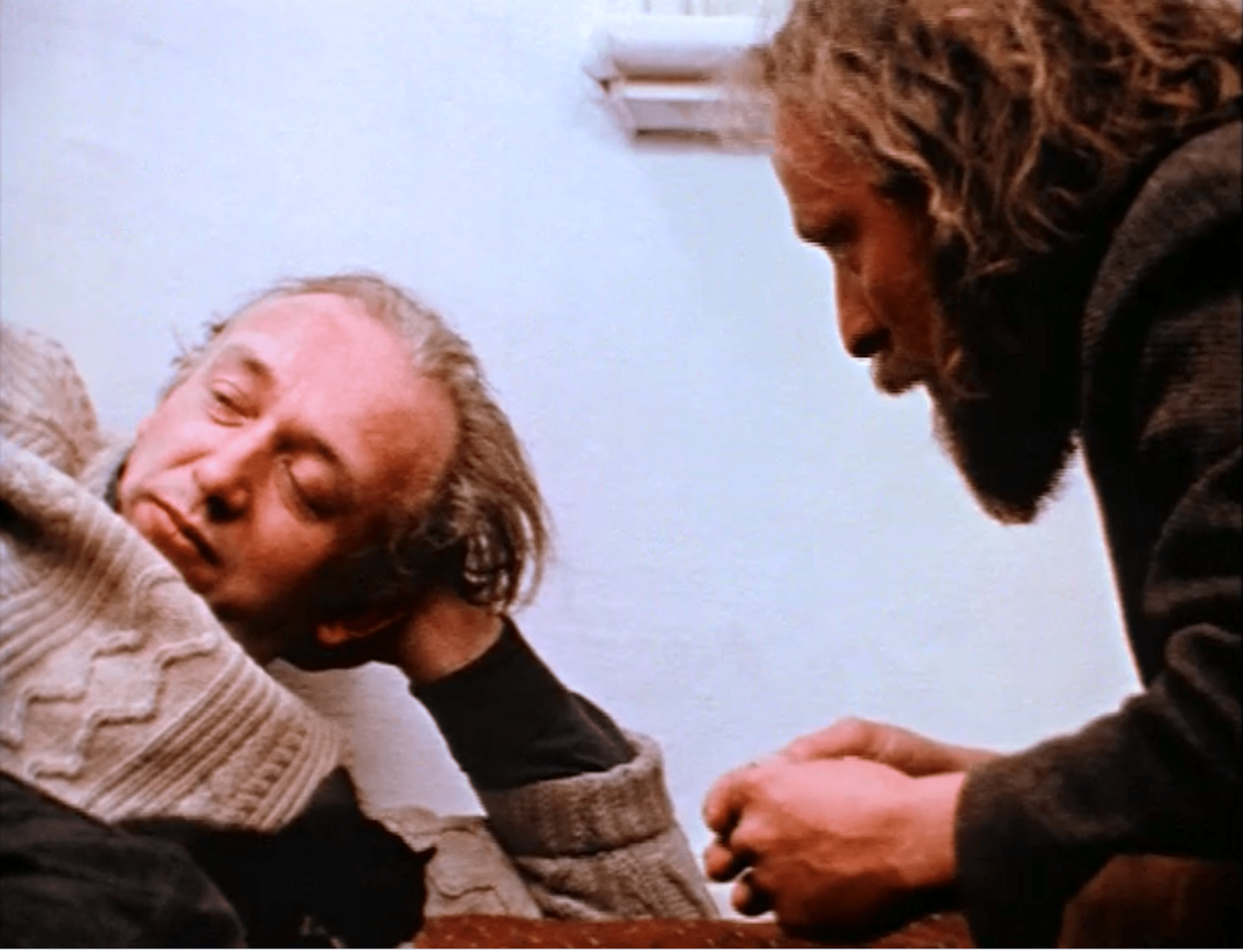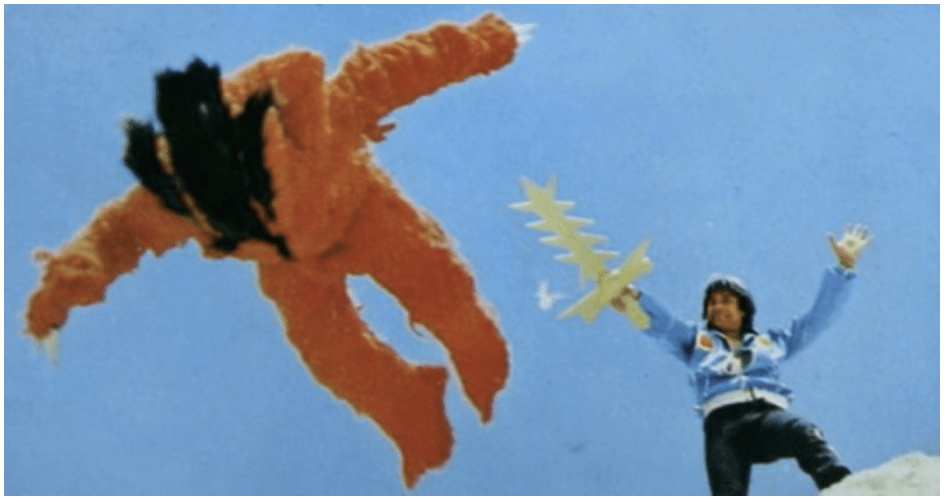
It’s been 17 years since I saw Steven Spielberg’s Schindler’s List. I remember crying in the theater, but when it was over I felt that something was wrong with the film that I couldn’t quite figure. All these years later watching Ognjen Glavonić ’s The Load helped clarify things for me.
Spielberg turned the holocaust into a movie. He took something that shocks and disorients us with its overwhelming implications and made it cinematic. This of course is his forte. He is a talented storyteller and cinematic craftsman, but dramatizing the holocaust is problematic.
A key feature of conventional storytelling is the use of a hero and an antagonist but these are rarely applicable in real life. The nazis were not simply villains. If there is one lesson to be learned from the holocaust it is that these terrible crimes were not committed by deviant sociopaths but by ordinary people. The true horror of the nazis was the ease with which they slipped into power and attracted followers. The movement adopted the banal, impersonal guise of governmental bureaucracy and turned death, cruelty, and torture into a mindless, industrialized system that required no malice to run, only faith.
To make a heart-pounding film about the holocaust is easy enough. The subject comes with all the dynamics and themes built-in. With a few 1000 squibs of blood, a smoke machine, and period uniforms you can get your audience’s adrenaline flowing, or you can make them cry but if you want them to ask difficult questions and find insightful connections you will need to change your approach.
Glavonić made The Load in Serbia in 2018. It is not about the nazi holocaust, but about the Serbian one in 1991. There is no blood, no action, no screaming, but you will not emerge from the film unscathed.
Glavonić comes from the same region as Bela Tarr and it shows. The Load is a dreadfully dark and empty film that opens the door into a world of defeated people who do not struggle so much as endure. Neither Tarr nor Glavonić offers much redemption or transcendence in their depictions of humanity. Between the two, Glavonić does at least offer a tiny ray of light.
Comparing The Load to Schindler’s List in just formal terms the difference is stark. Spielberg uses all the grand illusions that Hollywood and a 25 million dollar budget can provide. He presents us with dramatic lighting and deft cinematic effects like when the muzzle fire of the nazi machine guns lights up the stairway as they mow down their victims. It is visually very dramatic. The Load offers us none of this. Most of the film is a drab low-contrast grey. The camera is often handheld. That is not to say that The Load does not embrace cinema craft, in fact, it is beautiful in its own melancholy way.

Both films are stylized. The Load’s absence of conventional cinematography is as much a choice as Spielberg’s use of it. The Load uses long takes that wander away from the action. As the dialogue unfolds between two characters the camera will slowly pan away across the landscape while we continue to listen to the exchange of words. Everything is given a larger context, an atmosphere of existential emptiness.
There isn’t much dialogue in The Load, mostly we watch an ordinary man drive his truck from one location to another, just following orders so he can get paid. He doesn’t know what’s in the truck, but it doesn’t matter. He smokes his cigarettes and keeps driving down the mostly empty byways of the countryside. In the distant skies, there are sometimes explosions or the sound of an unseen fighter jet ripping through the air, but he is is focused on getting his paycheck so he can feed his family at home.
(Spoilers ahead)
When Vlada, the driver, discovers that he is hauling truckloads of dead bodies there is no explosive scene of screaming and tears. There is no drama at all. There is just a bulldozer digging a mass grave at dusk as Vlada looks on. There is no catharsis just our own dreadful sense of sinking into unexpected despair. There is a difference between being shocked or upset by a terrible situation and having your heartbroken. When both the audience and Vlada make the grim discovery there is a kind of dreadful resignation. It’s like a recognition of a place you have been before and are deeply saddened to revisit. It’s the opposite of shock it is the acknowledgment and acceptance of something you already knew existed but have tried not to think about.
The small bit of transcendence that is offered soon after the discovery comes when Vlada washes out the back of the rancid truck with a hose. We watch all the mud and grime slough out of the back and over the back bumper. There is no dramatic blood or clumps of hair just ordinary dirt pouring out onto the ground. Then he discovers a marble. It’s an ordinary glass toy marble, but he picks it up and examines it. This very small gesture is all Glavonić needs to convey Vlada’s thoughts and feelings. Where other films might have us listen to an inner monologue with heavy reverb, or have him whisper a few shaky words, Glavonić knows better. All that is needed is a moment of contemplation. No emoting necessary, we see that this playful little object has sparked a sad reverie in Vlada. He has temporarily left the practicality of paychecks and survival and allowed his heart and mind to ponder what is being lost. It is infinitely more powerful than the conventional Oscar-winning conveyance of anguish.

Drama for Spielberg is a screaming, nazi raging in front of an inferno. It works, we all hate the bad guy and cry for the victim, but it is facile. Spielberg gives us a story about good guys and bad guys and hope and triumph. Surely many of these things existed in the holocaust but what matters is not the moments that we expect. What needs to be addressed is the disorienting shock we feel when faced with something that is at once relatable but inconceivable. The holocaust challenges our working definition of what a human is. As homo-sapiens We don’t want to admit membership in a category that includes people who could do such things.

The Load refers to what we have to carry. The characters in The Load are burdened. They are not heroes on a journey, they are ordinary people who must survive the consequences of other ordinary people’s actions. Like in Bela Tarr’s movies, there is nothing uplifting only the facts of what is happening on the ground. The marble isn’t a symbol for something greater it is just a stimulus that causes a moment of reflection. Once when asked about the prevalence of rain in both his films and Tarkovsky’s films Tarr replied “Tarkovsky is more innocent than me. In his films, rain purifies people. In mine it just makes mud.”
In his book, Cultural Criticism and Society Theodor Adorno famously wrote “It is barbaric to write poetry after Auschwitz.” It may sound like hyperbole but he was there. He faced something inconceivably monstrous and came out the other end. We, the ones who only have second-hand memories of the subject, should at the very least proceed with caution.
Spielberg spent all the proceeds from Schindler’s List on a foundation that would work to further document the stories of the holocaust. The film made 321.3 million dollars and his choice to put it to good use is laudable, but in order to make that much money, the film had to be marketable. It had to make the holocaust salable by fitting it into a familiar storyline. When asked if Schindler’s List was a good representation of the Holocaust, Stanley Kubrick replied “Think that’s about the Holocaust? That was about success, wasn’t it? The Holocaust is about 6 million people who get killed. Schindler’s List is about 600 who don’t.”
The Load was a much smaller film both in the size of the production and in the scope of what it depicted. The advantage to a narrow scope is the ability to be intimate with the characters and through this intimacy find a ring of veracity. The Load is too dark and slow to make millions of dollars. It garnered a total of 28 thousand at the box-office, but its lack of money-making potential allowed, first-time director, Glavonić the freedom to set aside what is universally appealing and seek out the painful insight provided by an individual experience.

Glavonić speaks for one man, Spielberg speaks for millions. It means that necessarily Spielberg has to be less personal, less penetrating. It also means that Spielberg positions himself as an authority, a source of truth about history. Glavonić only needs to convey an individual’s experience in order to point to something universal which we are left to construct on our own. Glavonić ’s film presents us with a problem, a question that is difficult to face let alone answer. He involves us in the completion of the film. With Spielberg, we are spectators being given a pre-packaged history by someone who has done most of the work for us. By preprocessing the issues for us and by taking on such a massive scope we the audience is made passive. All we can do is hope the good guys win. In The Load, much of the separation is gone and we find ourselves caught in the same world as the protagonist, the real world where those who would commit such crimes still exist.

If you enjoyed this article click here for more
www.filmofileshideout.com/archives/the-ethical-problems-in-peter-brooks-tell-me-lies



